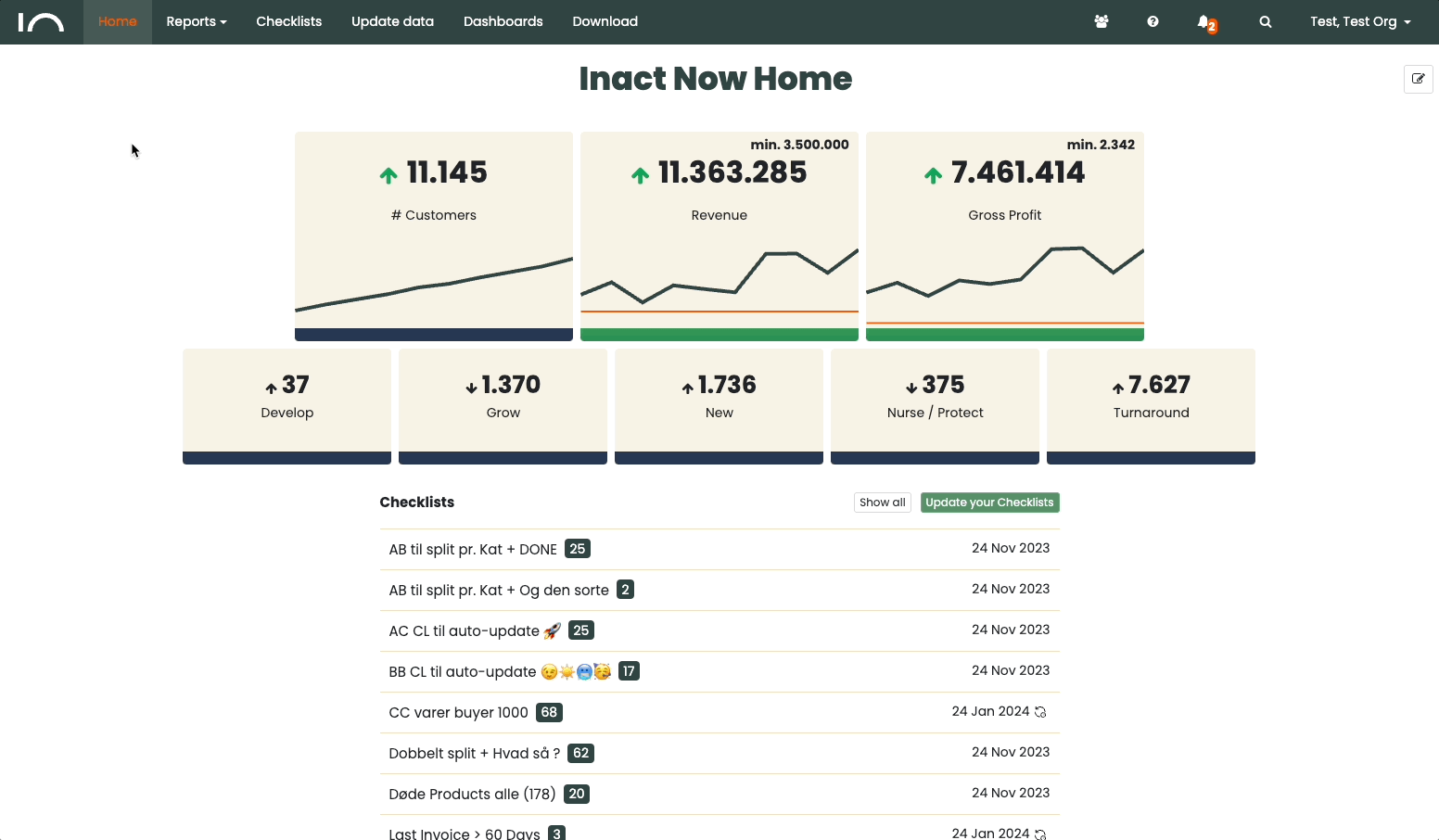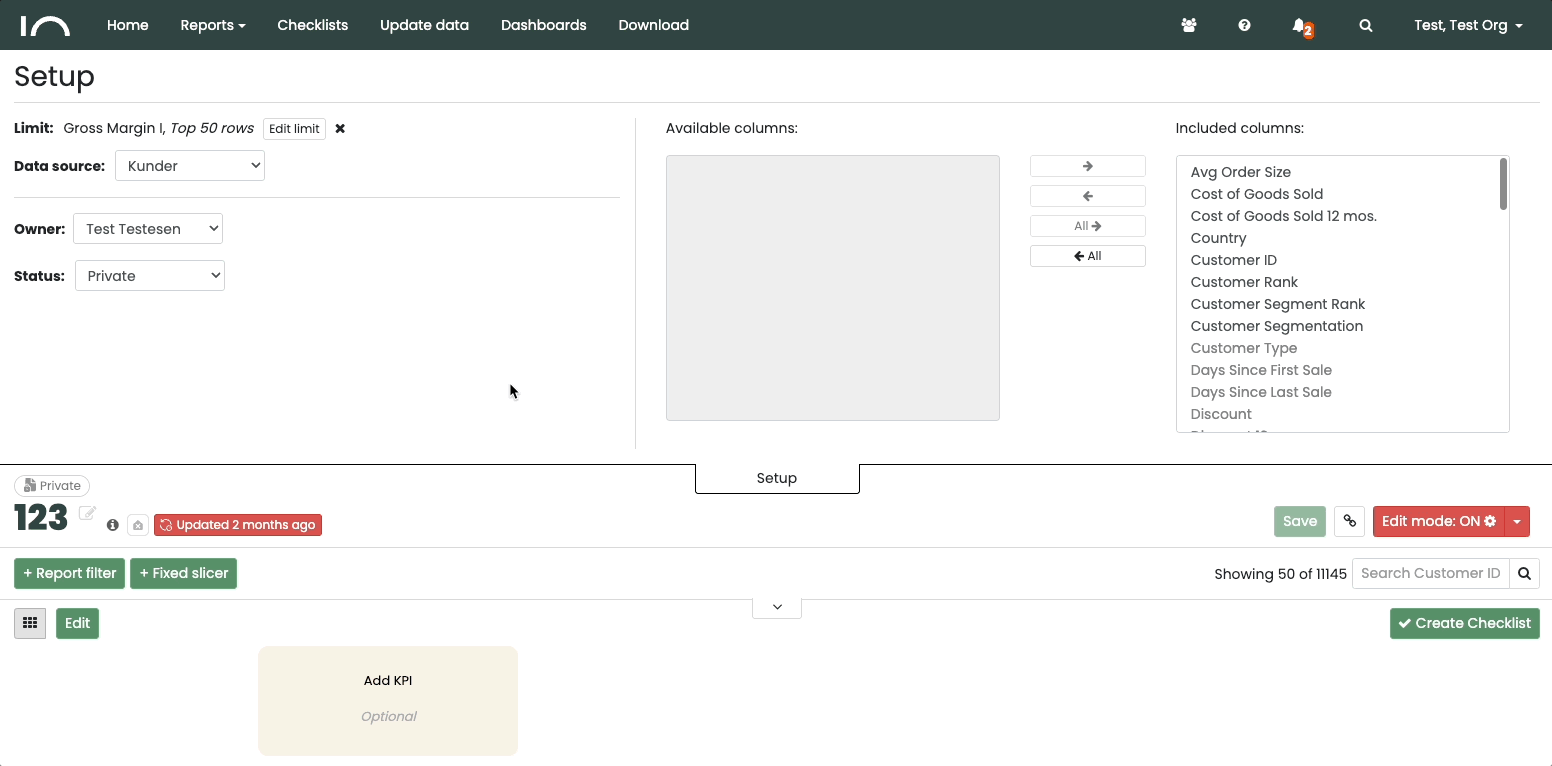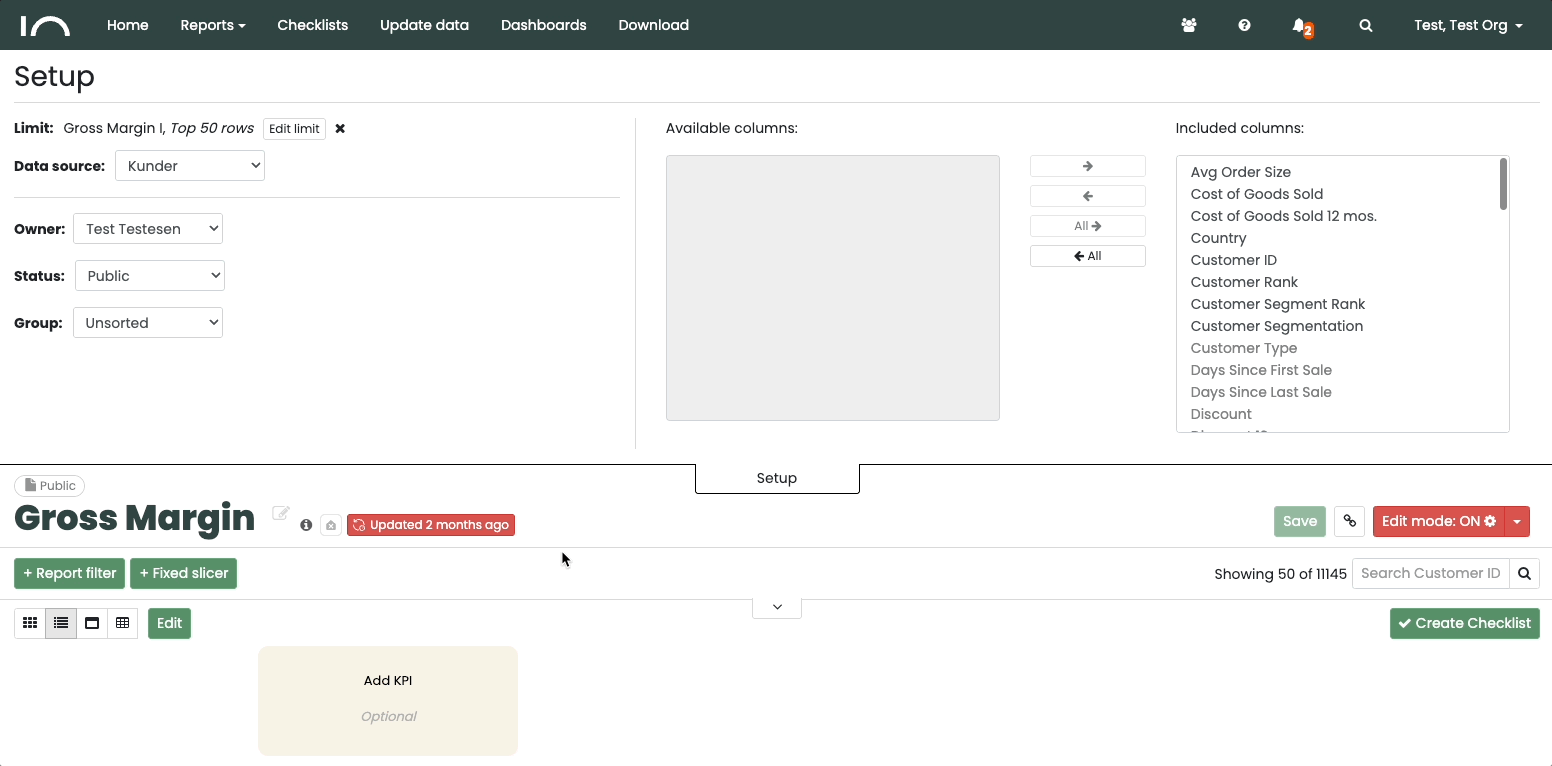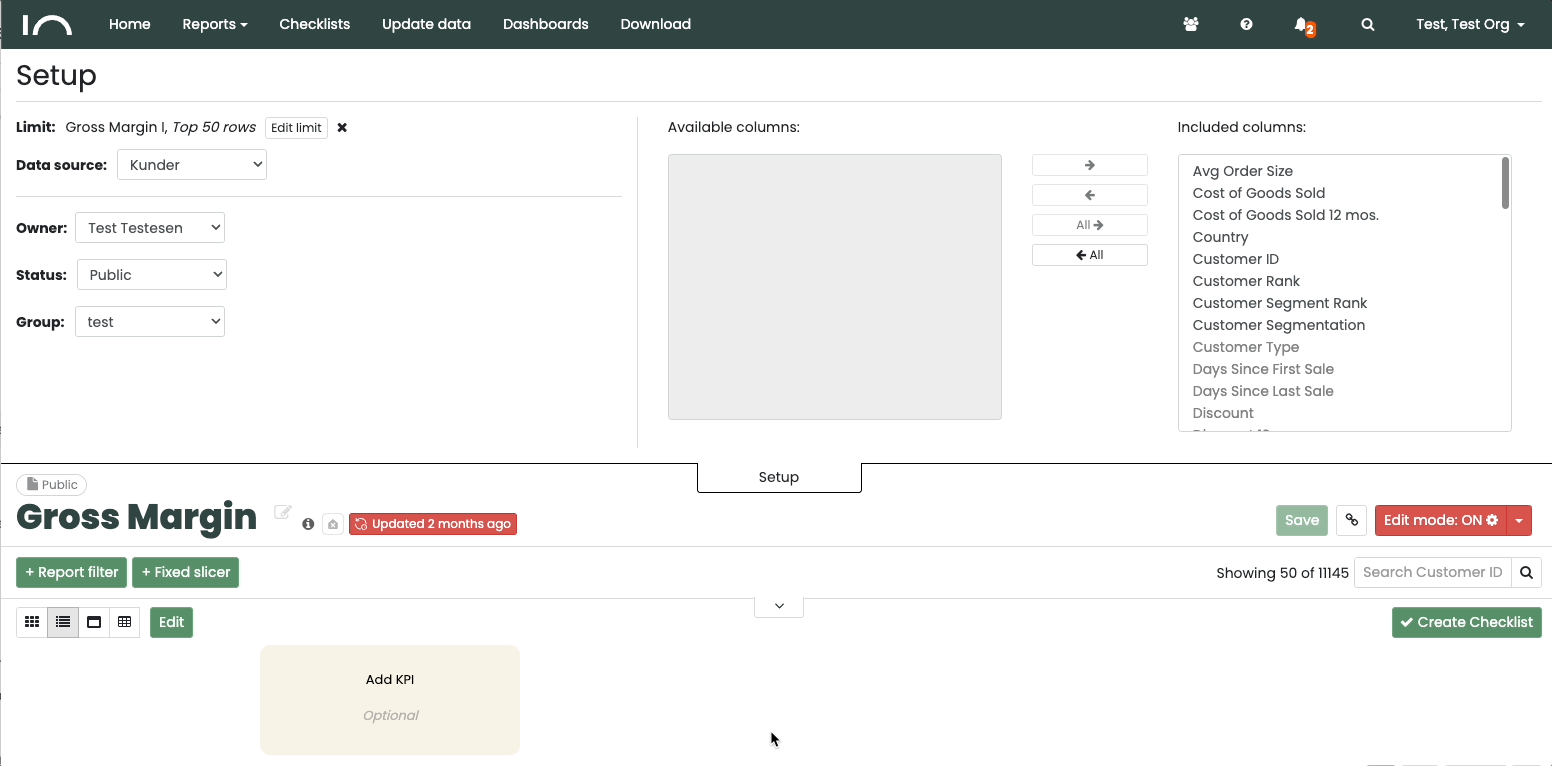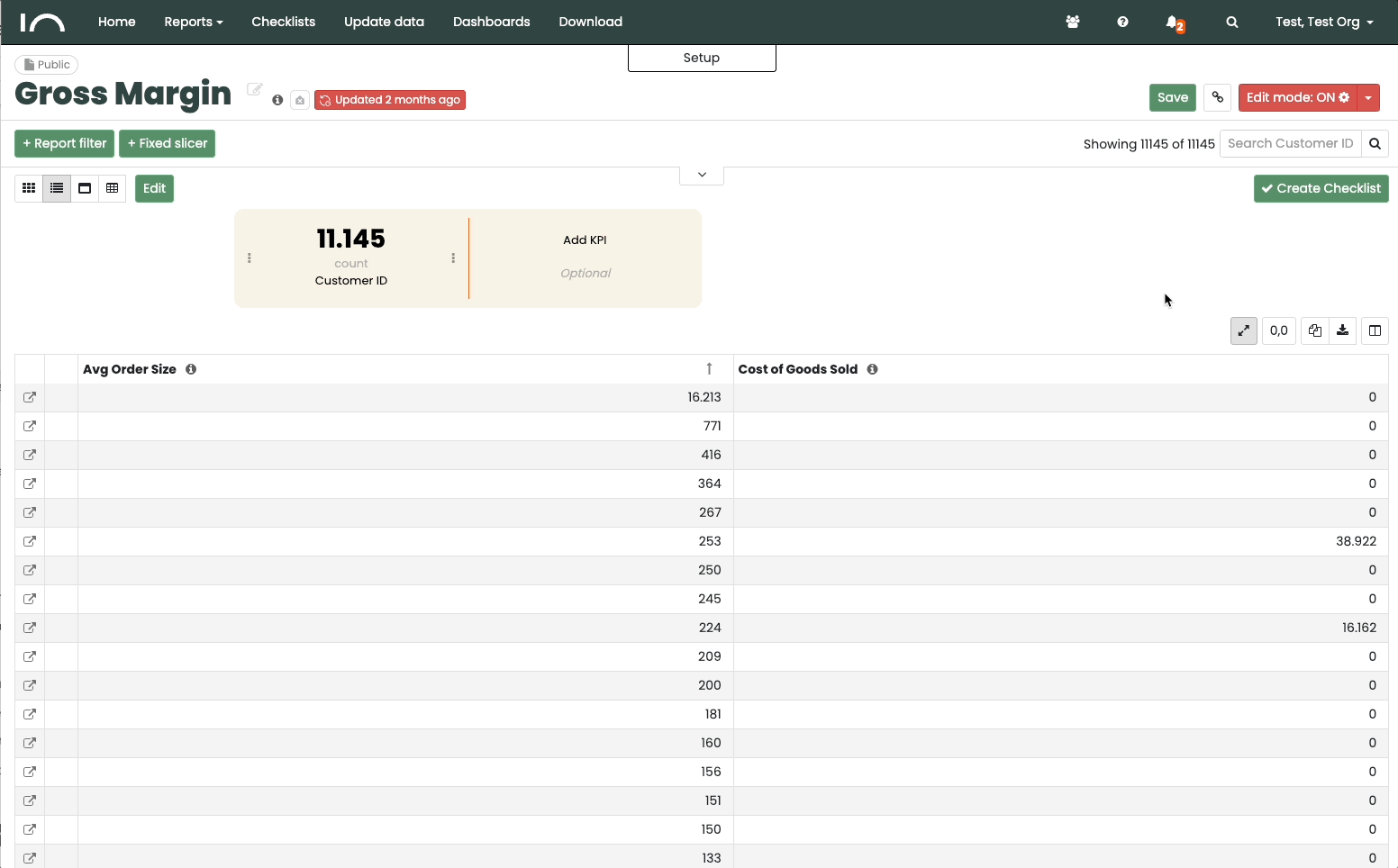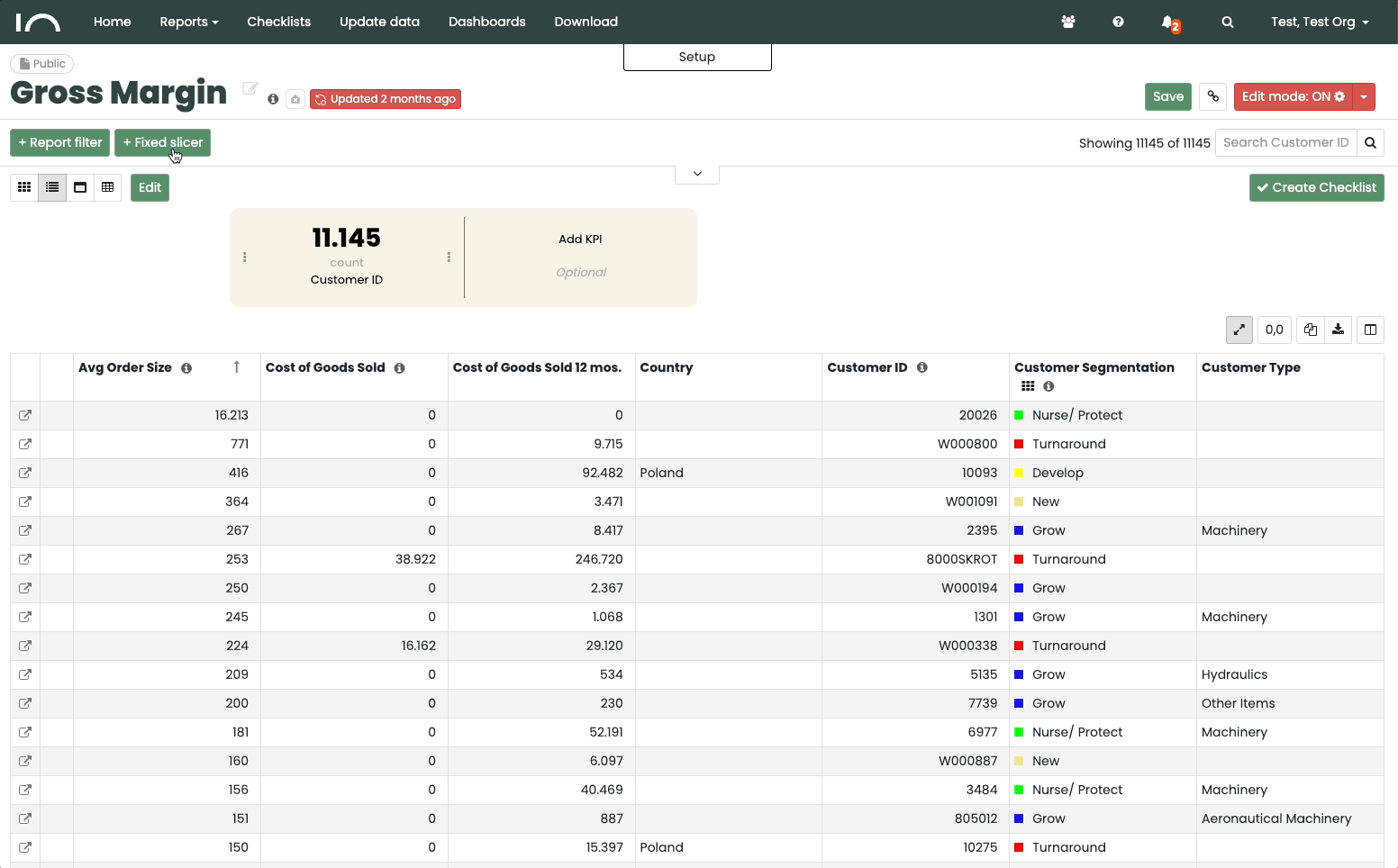To create an Insight from scratch, you need to consider the following steps to get the best results:
- Select your Data Source
- Set limit on the Insight (Optional)
- Name and describe
- Select Views and visualizations
- Select location in the Insight overview
- Select KPIs
- Set up columns
- Set filters and fixed slicers

